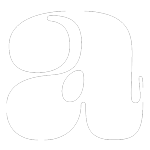In digital design, visual hierarchy and layout play pivotal roles in capturing user attention and guiding them through the intended content or message. As the internet continues to expand, the significance of well-structured visual elements has grown exponentially. Whether it’s a website, an app, or a marketing campaign, understanding how to strategically arrange design elements to create a clear visual hierarchy is essential for effective communication and user engagement. This article examines the fundamental principles of visual hierarchy and layout and explores how designers can utilize these principles to create visually appealing and user-friendly designs that effectively guide user attention.
Understanding Visual Hierarchy
Visual hierarchy refers to the arrangement of elements in a design in a way that establishes their importance and guides the viewer’s attention. It involves the deliberate use of various design principles, such as size, color, contrast, and positioning, to emphasize certain elements over others. By creating a clear visual path, designers can control the sequence in which users perceive and process information, ensuring that the most critical elements are noticed first. This can significantly impact user experience and engagement, ultimately influencing the success of a design project.
Key Elements of Visual Hierarchy
Size and Scale
Larger elements tend to capture attention more readily than smaller ones. By strategically increasing the size of essential elements, designers can guide users to focus on specific content or calls to action, encouraging desired interactions.
Color and Contrast
The use of contrasting colors can create visual impact and draw attention to specific elements. Bold and vibrant colors can be employed to highlight important information or key features, while muted tones can be used for secondary elements, ensuring a balanced visual hierarchy.
Typography
Typeface selection, font size, and text formatting all contribute to the visual hierarchy of textual content. Bold and larger fonts can emphasize headlines or key messages, while varying font styles can differentiate between different types of information, guiding users through the content effortlessly.
Alignment and Proximity
Consistent alignment and strategic grouping of related elements create a sense of organization and coherence, making it easier for users to process information. By placing related elements in close proximity, designers can establish visual relationships and emphasize the connection between different parts of the content.
Effective Layout Strategies
A well-planned layout is crucial for ensuring a seamless user experience and guiding users through the content intuitively. Here are some effective strategies for creating an engaging and user-friendly layout:
Clear and Intuitive Navigation
Intuitive navigation helps users easily find what they are looking for. Designers should ensure that navigation elements are prominently placed and easily accessible, enabling users to move through the content seamlessly.
Focused Content Placement
Placing the most important content in prominent locations, such as the top of a webpage or the center of an interface, can immediately capture users’ attention. Additionally, using the “F” or “Z” pattern layout can leverage users’ natural reading behavior, guiding them through the content effortlessly.
White Space Utilization
Incorporating ample white space around key elements can enhance their visibility and create a sense of balance within the layout. Proper use of white space can prevent visual clutter and allow users to focus on the essential information without feeling overwhelmed.
Responsive Design
With the increasing use of various devices, implementing a responsive design that adapts to different screen sizes is essential. Ensuring that the layout remains consistent and easily navigable across multiple devices enhances the user experience and encourages prolonged engagement.
Utilizing Visual Hierarchy and Layout for Effective Communication
A well-executed visual hierarchy and layout not only enhance the aesthetic appeal of a design but also play a crucial role in conveying information effectively. By understanding the target audience and their preferences, designers can tailor the visual hierarchy and layout to meet users’ expectations and guide them through the intended message or content seamlessly. Moreover, integrating these principles into the design process can significantly improve user engagement and facilitate a positive user experience.
Take Away
Visual hierarchy and layout are indispensable tools for designers seeking to create engaging and user-friendly designs. By employing strategic placement, emphasizing key elements, and ensuring intuitive navigation, designers can effectively guide users’ attention and enhance their overall interaction with the content. As the internet continues to evolve, the implementation of these fundamental design principles will remain crucial in creating compelling and successful visual experiences for users across various platforms and devices. By mastering the art of visual hierarchy and layout, designers can create designs that not only captivate users but also effectively communicate the intended message, fostering meaningful and lasting connections with their audience.


